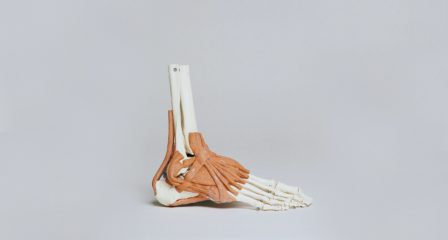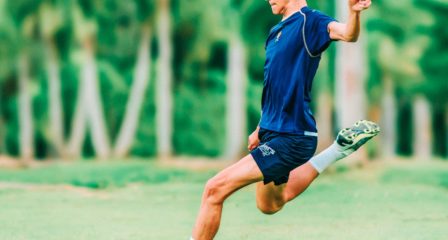The Injury Clinic physiotherapist and strength and conditioning coaches are always staying up to date with the latest research and findings to make sure that they deliver the most effective evidence-based treatment.
Staying up to date with current research is very important for practitioners as it provides:
- Evidence-based information on the effectiveness of treatment/exercises to ensure it is always relevant.
- Their patient care is always of a high professional standard as it aids in informed clinical decisions supported by research.
Current research articles, their summaries and key findings can be found below:
Including the Nordic hamstring exercise in injury prevention programmes halves the rate of hamstring injuries: a systematic review and meta-analysis of 8459 athletes (van Dyk et al., 2022):
Summary:
- The ‘nordic hamstring curl’ is a specific hamstring exercise utilised in many injury prevention programs.
- In this paper, researchers reviewed scientific literature with the aim to assess the effectiveness of nordic hamstring curls to reduce the risk of hamstring injuries in athletes.
- 15 studies were included in this review and meta-analysis, with participants spanning across different sports, genders and ages.
- 8459 participants were included across the 15 studies with a total of 525 hamstring injuries reported.
- Researchers only included studies which compared injury prevention programs with the nordic hamstring curl and usual training or programs without the nordic hamstring curl.
Findings:
- Researchers found close to a 50% decrease in the incidence of hamstring strains in groups which completed nordic hamstring curls compared to control groups.
- The incidence of hamstring injuries in groups that completed nordics was 0.1 of every 1000 hours of sport.
Effects of 10 Months of Speed, Functional, and Traditional Strength Training on Strength, Linear Sprint, Change of Direction, and Jump Performance in Trained Adolescent Soccer Players (Keiner et al., 2020):
Summary:
- Performance in sport (youth sport included) has become a much larger point of discussion over the last decade – with pathway academies and professional sporting teams keeping a close eye on the future players of their sport.
- The argument of traditional weight training vs bodyweight movements vs jumping/sprinting for youth sport performance will continue to take place amongst sport coaches/strength coaches/parents. However this article may shed some light onto the comparison of long term performance benefits.
Findings:
- Traditional strength training 2x weekly showed significant increases across all measured performance variables (maximal strength, linear speed, change of direction speed, and jump height).
- Jump performance was the only variable positively affected by plyometric training. (Interestingly – the only group that saw significant progression in 20m sprint speed, was the traditional weight training group). However it is important to note that the plyometric and speed group showed a maintenance level of 1RM strength levels.
- Functional training (body weight and mini band) can not be solely recommended to improve strength, sprint, jump, or change of direction performance – as no significant increases were observed across this study.
- Traditional strength training should be placed as a high priority if strength, speed, and COD is indicative of your sport performance.
Menstrual cycle-based undulating periodised program effects on body composition and strength in trained women: a pilot study (Vargas-Molina et al., 2022):
Summary:
- There is some emerging research into the hormonal fluctuations that occur in a woman’s menstrual cycle and how this may affect strength and performance. This study had a very small sample size but implemented a strength program that matched menstrual cycles, and compared it to a group that had an unmatched program.
Findings:
- Both groups improved strength in their 1RM for squat and bench press, with a greater improvement seen in the bench press when training was matched to the menstrual cycle.
- A significant improvement was seen in the countermovement jump test only in the group where training was matched to menstrual periods.
- In conclusion, there may be some strength benefits when training is matched to menstrual period cycles. This would, however, be difficult to implement and maintain, particularly in a team sport environment.
Early versus delayed lengthening exercises for acute hamstring injury in male athletes: a randomised controlled clinical trial (Vermeulen et al., 2022):
Summary:
- In sports that require high-speed running ie. football, soccer, basketball., an acute hamstring strain is the most common muscle injury and have high rates of reinjury
- Lengthening (eccentric) exercises have become the most popular therapeutic exercise given by health practitioners to hasten return to sport and to decrease risk of re-injury, but the optimal time to begin these exercises is unknown
- The aim of this trial was to evaluate the effectiveness of early versus delayed introduction of lengthening exercises for acute hamstring injuries
Findings:
- The median time to return to sport for the early lengthening group was 23 days and 33 days in the delayed lengthening group. With the sample size of 90 adult male athletes, this difference was not statistically significant but may be clinically significant
- There was no difference in re-injury rates between the two groups
- From this article, we can deduce that there may be a significant effect in beginning eccentric hamstring exercises immediately post acute injury for return to sport, but does not change re-injury rate. The article was limited due to it only investigating male adult athletes
- Keiner, M., Kadlubowski, B., Sander, A., Hartmann, H., & Wirth, K. (2020). Effects of 10 Months of Speed, Functional, and Traditional Strength Training on Strength, Linear Sprint, Change of Direction, and Jump Performance in Trained Adolescent Soccer Players. Journal Of Strength And Conditioning Research, 36(8), 2236-2246. https://doi.org/10.1519/jsc.0000000000003807
- Vargas-Molina, S., Petro, J., Romance, R., Bonilla, D., Schoenfeld, B., Kreider, R., & Benítez-Porres, J. (2022). Menstrual cycle-based undulating periodized program effects on body composition and strength in trained women: a pilot study. Science &Amp; Sports. https://doi.org/10.1016/j.scispo.2021.11.003
- , et al. Early versus delayed lengthening exercises for acute hamstring injury in male athletes: a randomised controlled clinical trial.



